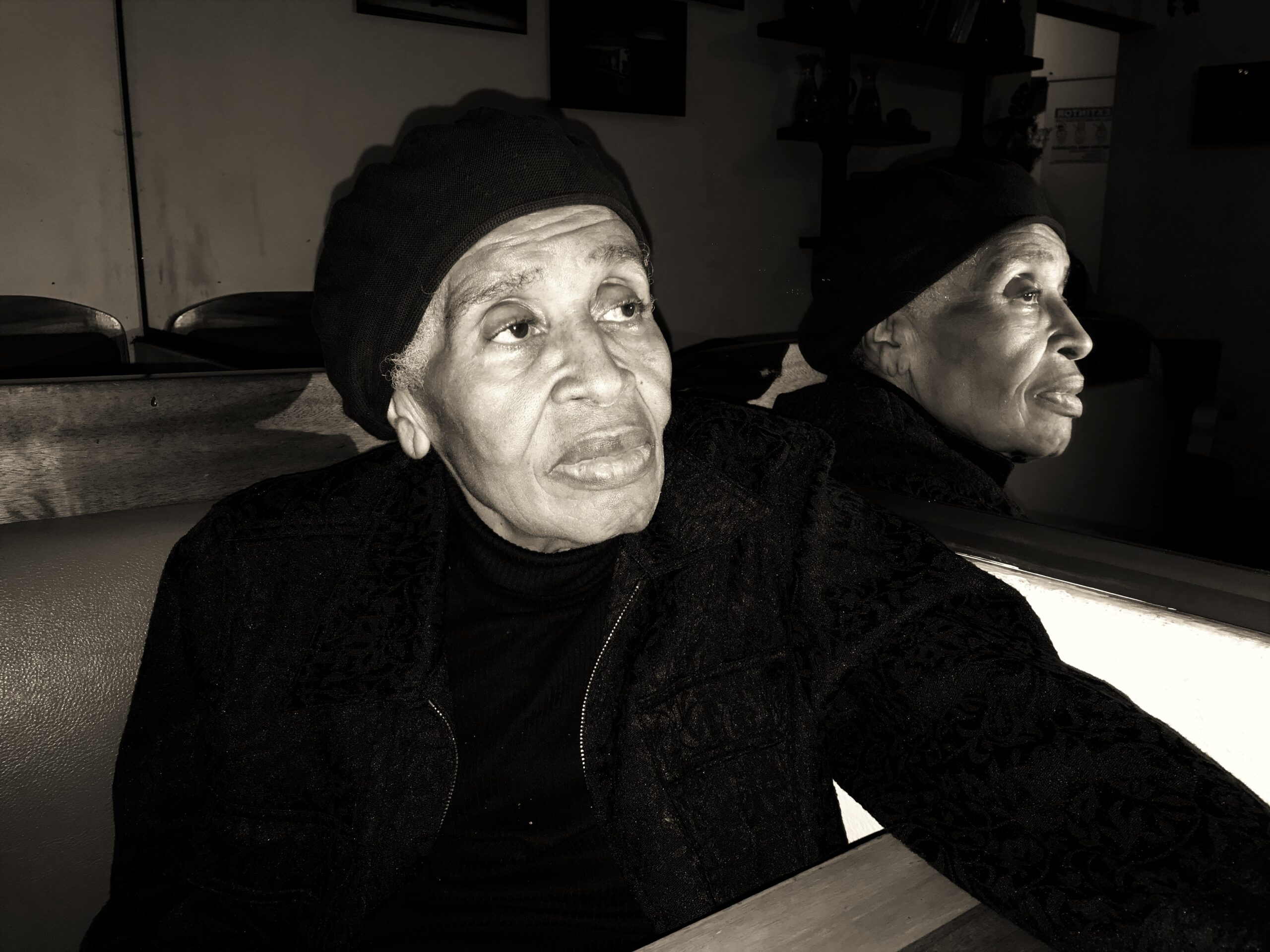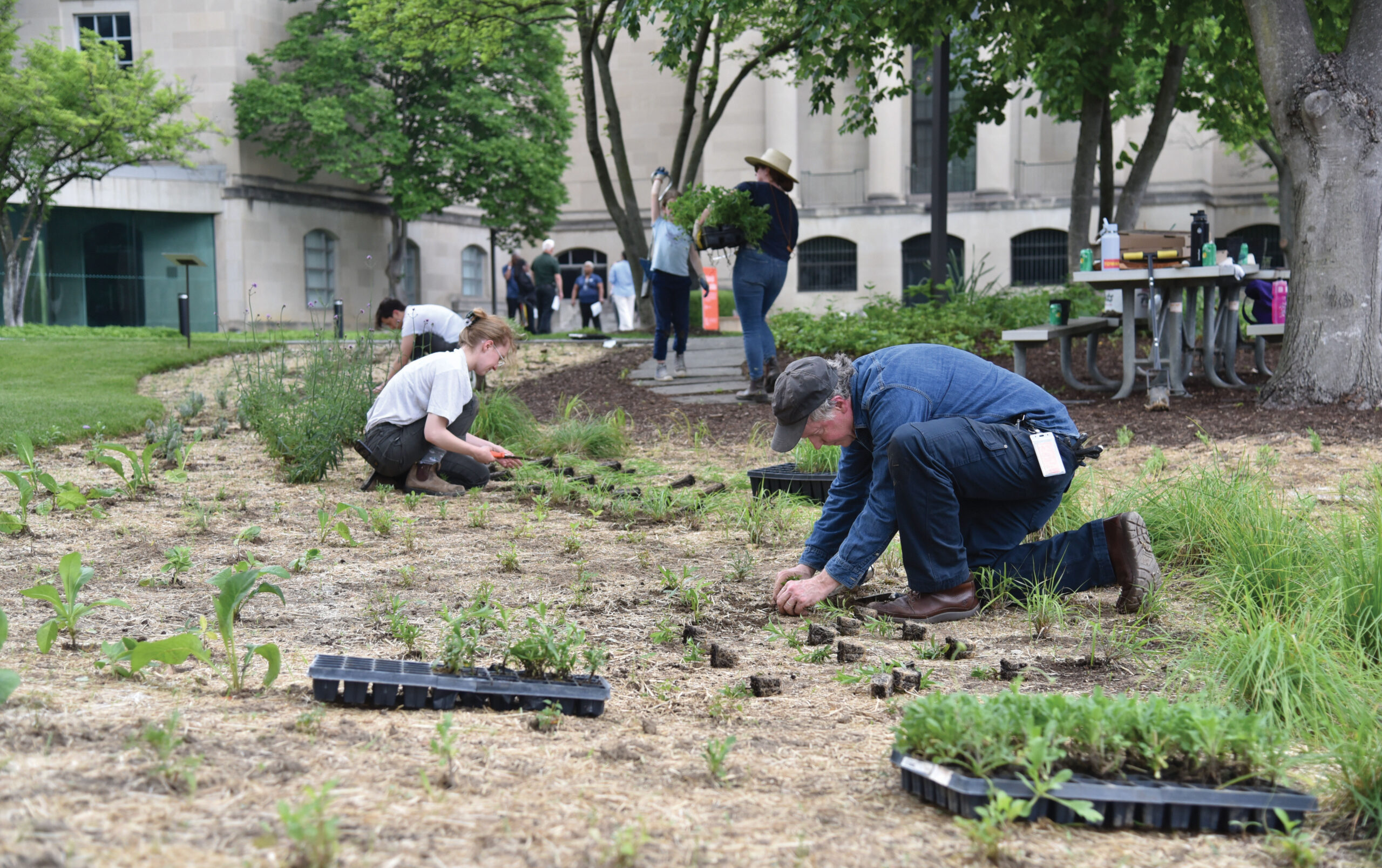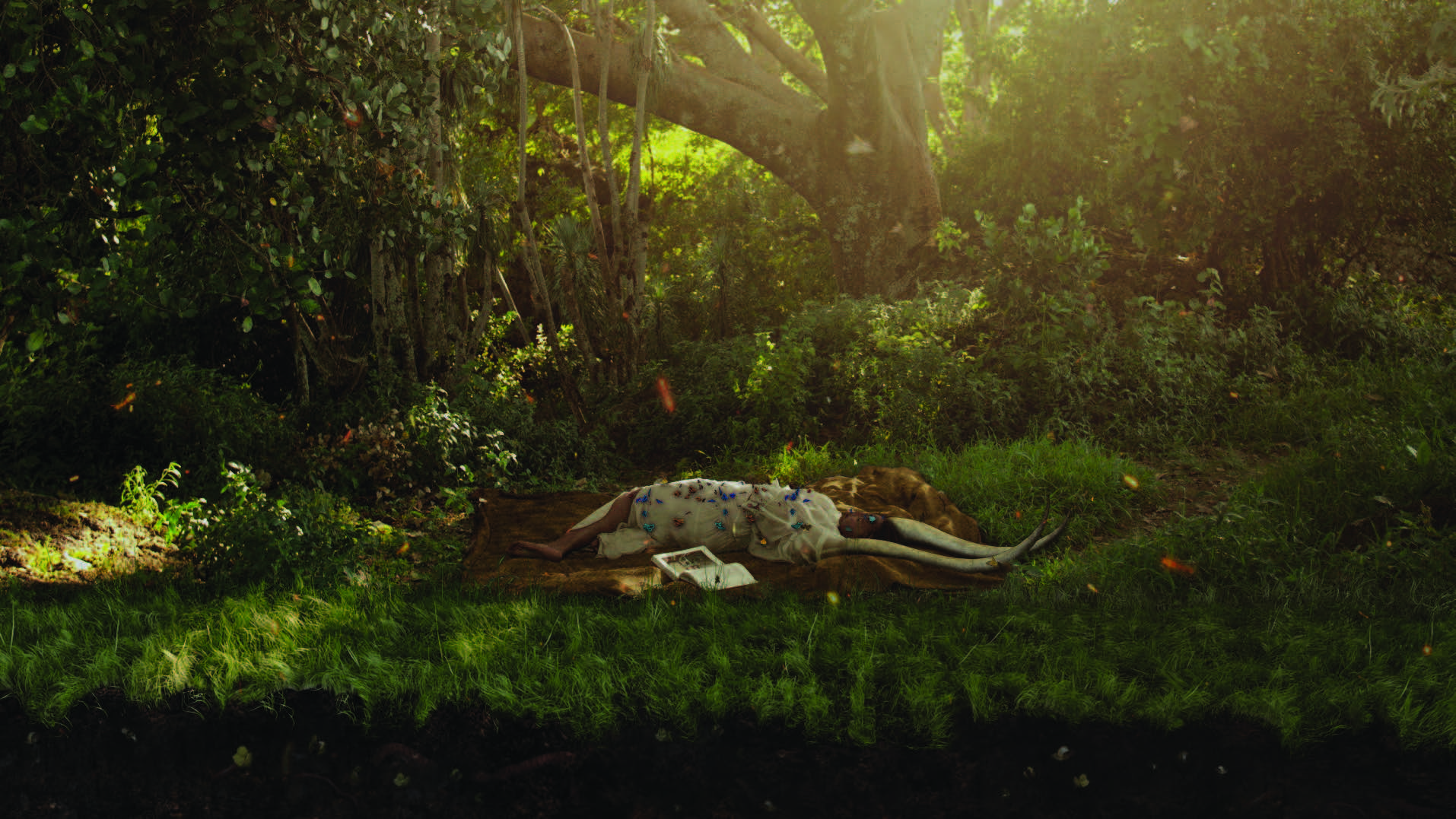
Black Earth Rising revels in nature’s beauty and reveals new ways of understanding social justice and climate change
Presented as part of the Museum’s Turn Again to the Earth environmental initiative, Black Earth Rising invites visitors to see the beauty and power of nature through the eyes of leading artists.
What inspired you to curate Black Earth Rising?
I was aware that a lot of artists have thought historically about legacies of colonialism; many artists are thinking about the climate crisis today. I was interested in the artists who are bringing both of those themes together in their work. The show gathers those artists together—not with a sense that each of them is saying exactly the same thing, but to explore the different ways they’re seeing this rich and complex, challenging territory and, through their work, articulating different aspects of this wider story.
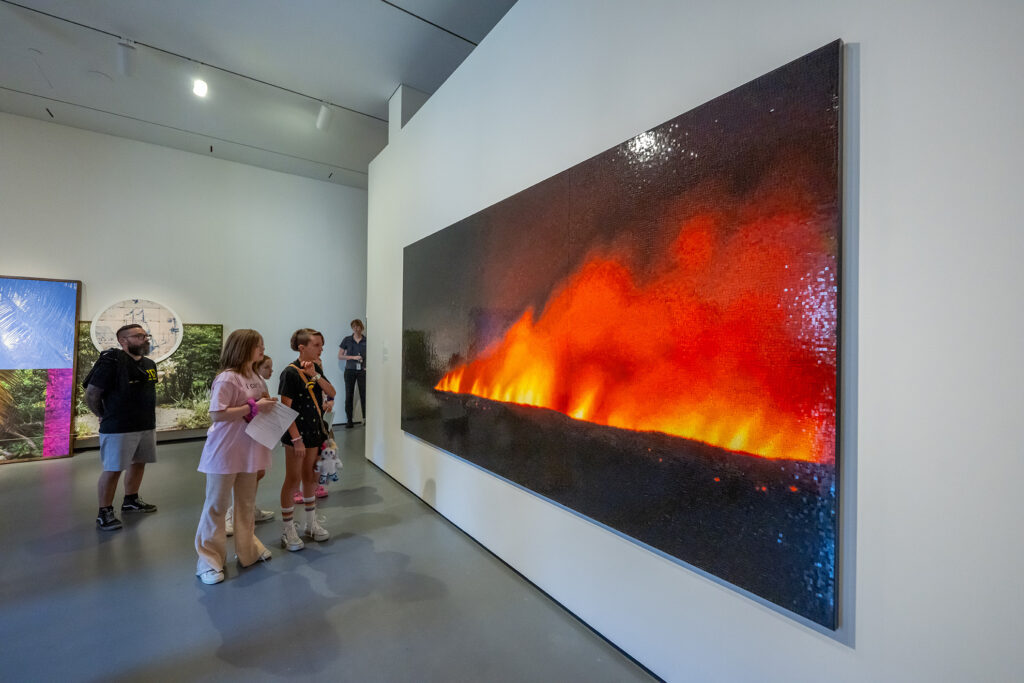
How did you choose the artists featured?
The simplest premise is that these are artists of African diasporic, Latin American, and Native American origin. So, the first thing is, I wanted to bring together artists who, through their work, are looking at different experiences of colonialism from the perspective of individual and social and cultural histories of being colonized, being subjugated, being made Other, being dispossessed. I wanted to explore how artists with those particular backgrounds are looking culturally and artistically at those histories and those legacies.
And then within that, the thing I’m really interested in is artists who are thinking historically but also summoning nature as a site of resistance, as a site of beauty, as a territory that allows them to think beyond an experience of being made Other, an experience of being subjugated, and suggesting that nature can be a site of mourning, a site of fragility, a site of beauty, a site of renewal, a site of gathering, a site of possibility. So, the artists in this show, for me, are able to grapple with these quite complex histories, who can think into the past and then also hold the fragile place we all have on the planet—hold that as a site of possibility in the present tense but also as a site of resistance against the removal and the erasure of people of color from natural landscapes, which is an aspect of ecological discourse that has taken place over the last 200 or so years.

What unique perspectives do you think they bring to conversations about environmental and social
justice?
Often exhibitions or events around ecological crisis and environmental change are predicated on experiences in the Northern Hemisphere. So, we think about polar ice caps, and we think about forlorn polar bears—all things that are true and valid. But actually, the human experience of climate change is experienced predominantly by people in the Global South, people in the equatorial south. So, with this exhibition, I wanted to preference the point of view of artists whose origins lie culturally, genealogically, within the Global South or within communities of color.
Then, I wanted to think about what aesthetically, where aesthetically, that choice might lead: What kind of show do you have around the climate crisis that is not predicated on the Northern Hemisphere, that is not predicated on shrinking ice caps, but perhaps thinks tropically or equatorially or from the position of rainforests or plains? You start to see a different aesthetic palette come into play. The palette is warmer; the palette is richer. The palette is also full of history and myth and possibility.

So, we can go to Firelei Báez and these mythological creatures from the folklore of the Dominican Republic—these figures that exist within the works, who speak of colonial domination but also Indigenous resistance.
We can go to Frank Bowling, the great Guyanese British painter. His Map paintings are part of a series that he made at the end of the 1960s and 1970s. These extraordinary, richly colored works are really thinking about the transatlantic slave trade—the forced removal and migration of millions of people, the reestablishment, the reworking, I think, of geographical roots and connections across the Atlantic—but do so with enormous poignancy and almost breathtaking beauty.
Four works by Yinka Shonibare, his Earth Kids, are thinking about dispossession—thinking about ways that a younger generation grows up dispossessed from the land as a consequence of environmental depredations—but with a slight, sly humor.
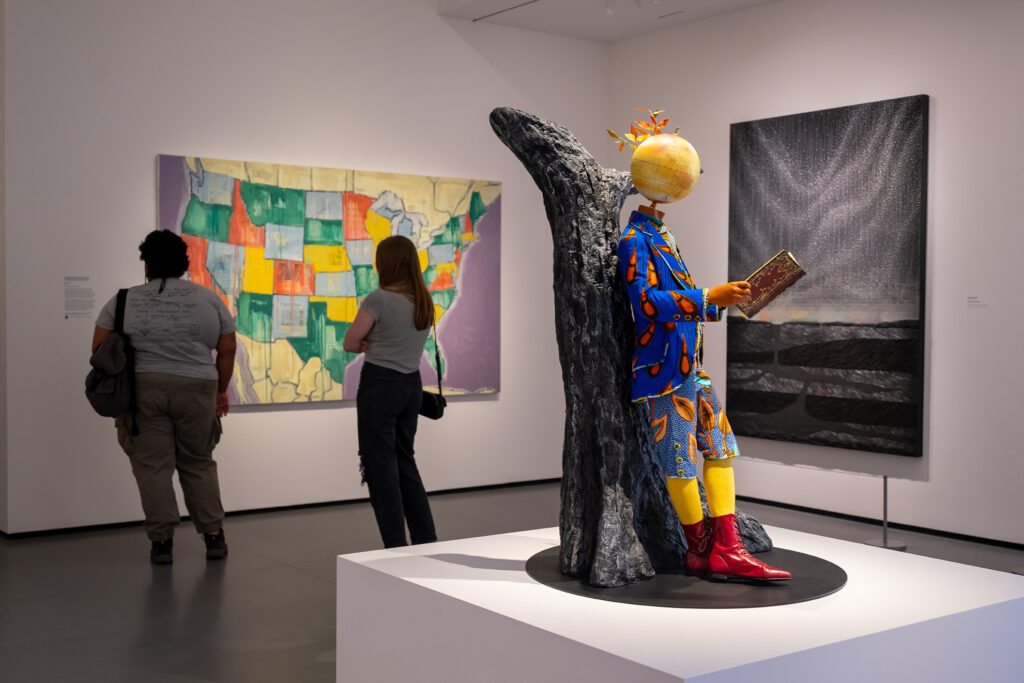
So, time and again, what I wanted is artists who can hold these complex histories, who can think about the contradictions of those histories, but then can bring their own visual language to bear in ways that are not to do with lecturing, not to do with a kind of linear messaging, but who can create works that invite audiences into an engagement, into a discovery, into an encounter.
Turns out, beauty is not anomalous, is not contradictory, to the message.
This is the thing: These are artists. Artists speak through images; artists speak with extraordinary eloquence. You’re allowed to enjoy the show—that doesn’t make the show any less serious in its themes, in its commitment to the issues it addresses. But the language is a language that says, Let’s sit and remain with this, and then let’s think into possibility. Let’s think into ways of seeing that allow us to also reach further, to imagine further, to do what artists can do, which is to show us ways of seeing and imagining— even being—that you hadn’t quite contemplated before.
What do you hope visitors take away from the show?
I hope that when audiences visit the show, they cross the threshold and see mourning, beauty, possibility, a fraught past, a fragile present, but also the capacity that artists invite us to [achieve]—which is to imagine otherwise, to imagine both what has been but also what might be in terms of how we can hold onto the world that we share in common. How can we acknowledge its beauty—it’s fraught—and recognize that beauty as something important, something significant, something genuinely worth holding onto?
BMA Members get free admission to Black Earth Rising and all other ticketed shows. Visit artbma.org/membership for more details. Tickets are available at artbma.org/blackearth.
Guest curator Ekow Eshun is the former director of the Institute of Contemporary Arts, London, and chairs the commissioning group for the Fourth Plinth in Trafalgar Square, one of the world’s most famous public art projects. A renowned author, curator, and lecturer, he has been at the heart of international creative culture for several decades. His writing has appeared in a range of publications, including The New York Times, Financial Times, The Guardian, and Artforum. In 2024, he published a work of creative nonfiction, and he authored the exhibition’s companion volume, also titled Black Earth Rising.
Black Earth Rising is supported by Nancy Dorman and Stanley Mazaroff, the Hardiman Family Endowment Fund, The Dorman/Mazaroff Art Exhibition Fund, Baltimore Gas and Electric, the Sigmund M. and Mary B. Hyman Fund for American Art, The Clair Zamoiski Segal and Thomas H. Segal Contemporary Art Endowment Fund, the Wolf Kahn Foundation, the Victor J. Schenk Trust, and The Cowles Charitable Trust.

Photo of Ekow Eshun by Zeinab Batchelor / Photos of Black Earth Rising installation by Maximilian Franz


